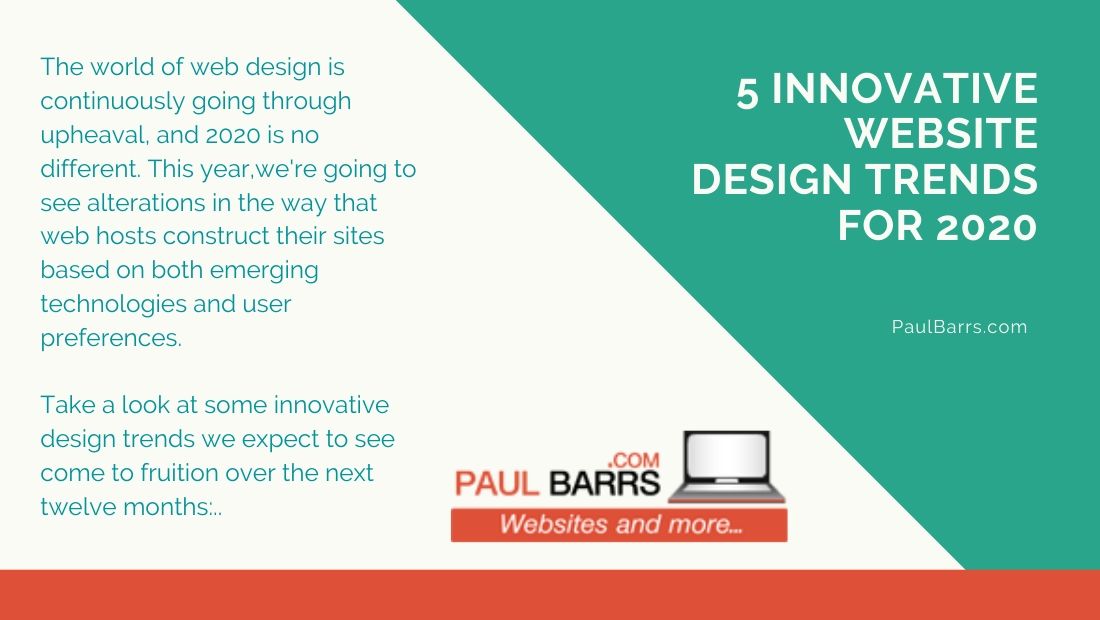
28 Jan 5 Innovative Website Design Trends for 2020
The world of web design is continuously going through upheaval, and 2020 is no different. This year, we’re going to see alterations in the way that web hosts construct their sites based on both emerging technologies and user preferences.
Take a look at the following innovative design trends we expect to see come to fruition over the next twelve months:
- Sites That Use 3D Graphics Engines
Historically the only arena in which you experienced 3D environments was in video games and entertainment. The fundamental technologies that make these environments possible, however, have become so cheap and ubiquitous that they are now finding their way into websites too.
If the idea of a three-dimensional website seems a little alien to you, you’re not alone. Most users haven’t experienced a recreation of a 3D space in their browser to this day. The technology to deliver such an experience, however, is already here. Web hosts can now provide off-site graphics rendering and deliver low-latency simulated environments through the cloud. Guests then literally navigate around the screen, clicking on objects to move to the next “page.”
Is it a gimmick? Only time will tell.
- Scroll-Generated Pages
Ninety-nine per cent of the world’s web pages are static. What you see is what you get.
Scroll-generate pages, however, are different. Here the act of scrolling itself adds visual interest for the user, creating a more dynamic experience.
Take Apple, for instance, and the company’s attempts to market its highly-successful AirPod Pros online. The firm’s webpage for the product uses a series of scroll-generated fields to create sound waves emanating from an image of the earphones. The visual effect adds interest and makes the product seem more “real.”
Regular companies can do this sort of thing too, adding life to otherwise static product pages.
- Dark Modes
If you spend a lot of time browsing company websites, you might have noticed a new trend emerging: giving users the option to choose “dark mode.”
Company website hosts are becoming increasingly aware that people are less willing to use their devices before bedtime because of the effect that the light has on their ability to sleep. Harsh blue light late in the evening can disrupt rest and leave people feeling groggy in the morning.
For companies, though, this trend is bad news. It means that they’re losing valuable selling time in the evenings.
Many, therefore, now offer dark mode that changes the colours on their websites so that they emit less blue light but still give users a great experience. Dark mode is also popular among users who want to browse sites but with less eye strain.
- AI-Generated “Suggests”
The days of going to a site and experiencing the same content as everyone else appears to be at an end. Over the coming decade, most sites will attempt to deliver people with information personalised to them, using already-gathered data.
A lot of websites already use this technology. Holiday platforms, for instance, now suggest destinations based on a user’s interests, bookings and previous searches. Video-sharing platforms, like YouTube, do something similar, serving up recommendations based on user history. Even music sites like SoundCloud now offer personalised recommendations to all their customers.
The aim here is to make the website experience more personal. When people go shopping online, they don’t want to browse through all products in the e-commerce company’s inventory. Instead, they want it to present them with a list of possible items they might like. Amazon does this right now. Expect others to follow suit.
- Voice-Activated UIs
The last decade saw some staggering advances in the quality of machine speech and comprehension. Google and others developed new technologies that could accurately identify and transcribe vocal patters for the first time, opening up a host of possible use cases.
One of those is website interfaces. Companies will increasingly give users the option of searching through their sites using voice commands in 2020, capping off a decade when Siri and Alexa went mainstream.
While “VUI” (voice user interface) might appear excessive, there’s a lot of evidence that this is something that people want. People won’t just use voice interfaces on shopping sites to give commands like “go to the clothing section.” They’ll also use it to get online platforms to make recommendations. So, for instance, somebody using a music site could say “show me some upbeat and happy songs.” Similarly, a person searching for birthday presents on an e-commerce store could say “give me a list of presents suitable for my granddad” and so on.


